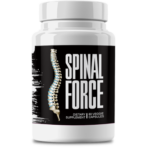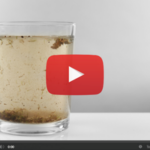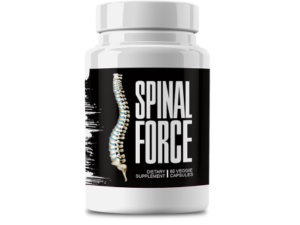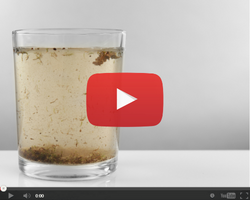This Village-Made Chinese Pain Reliever Eliminates Back And Joint Pain!
Transforming Jaw Health: The Role of TMJ Physio Treatments

Diving Into TMJ Physio Treatments
Ever feel like jaw pain is messing up your day-to-day vibe? You’re not alone. Thankfully, TMJ physio treatments are stepping in as a game changer for many. In this chat, we’re going to break down how these targeted therapies can bring lasting relief and better jaw function to anyone dealing with a TMJ disorder. Having spent almost ten years helping folks tackle issues with both hearing and jaw pain, I get how a timely, effective TMJ physio session can turn things around. We’re blending the latest research with real-world tips so you can see why adding TMJ physio to your healthcare routine might be just what the doctor ordered.
What's the Deal with TMJ Disorders and Why TMJ Physio?
TMJ issues can pop up in all sorts of ways—ranging from muscle pain and annoying clicking to outright stiffness and limited jaw movement. Enter TMJ physio: this specialized form of physiotherapy zeroes in on relieving muscle tension and fixing joint issues. Many feel a glimmer of hope as soon as they discover that tailored physical therapy might just be the ticket to recovery. By working with your body’s natural mechanics, TMJ physio gently restores balance in your muscles and joints, offering a refreshing alternative to those quick-fix solutions that often miss the mark.
The Journey of TMJ Physio Treatments
Not too long ago, options for dealing with jaw pain were pretty limited, usually pushing patients toward surgery or medications. Now, we’re in a different ball game. With advanced manual techniques and cutting-edge diagnostic tools, therapists can now pinpoint and treat the pain at its source. Neuromuscular techniques, personalized therapy plans, and decades of research have all come together to create what feels like an artful science. The evolution of TMJ physio treatments shows that sometimes, the slower, thoughtful approach really is the best way forward.
Why Add TMJ Physio to Your Jaw Health Routine?
Incorporating TMJ physio into your health plan isn’t just about easing pain—it’s about improving how you live every day. Imagine moving your jaw more freely, experiencing a better muscular balance, and saying goodbye to those nagging aches. The teamwork behind TMJ physio isn’t just about healing; it’s also about learning self-management to stave off future flare-ups. This proactive approach means you’re not just getting temporary relief, but a long-term boost to your overall jaw health.
Getting a Handle on TMJ Disorders for Better TMJ Physio
What’s Behind TMJ Disorders?
TMJ problems can spring from a mix of issues—chronic stress, arthritis, injuries, or even grinding your teeth at night. Over time, the constant strain on your jaw muscles or joints can lead to a whole cascade of discomfort. Add in factors like poor posture or habits like nail-biting, and it’s clear that TMJ discomfort often has many triggers. By understanding these causes, both therapists and patients can work together to craft a well-targeted treatment plan. Addressing each factor one by one is really the key to smoothing out the journey toward better jaw function.
Spotting the Signs and Knowing When to Seek Help
It helps to catch TMJ issues before they spiral into something more serious. If you notice things like clicking in your jaw, persistent soreness, headaches, or trouble moving your jaw, it might be time to get a professional’s opinion. Difficulty chewing or speaking without discomfort can also hint at an underlying TMJ problem. When these symptoms start interfering with your daily life, it’s a smart move to consult a TMJ physio specialist. Early intervention not only eases recovery but also prevents those little issues from snowballing into bigger challenges.
How Do We Diagnose TMJ Issues?
A solid evaluation is a cornerstone of successful TMJ physio. It all starts with a detailed history and physical exam, where the therapist checks out how your jaw is working and looks for any odd patterns. Sometimes, you might need imaging like X-rays or MRIs to get a crystal-clear picture of what’s going on inside those joints. This in-depth assessment is all about pinpointing the specific problem so that a personalized treatment plan can be crafted. When you nail down exactly what’s causing the discomfort, the path to relief becomes a lot clearer—and faster.
The Science Making TMJ Physio Work
Rebuilding Your Jaw, Step by Step
At its core, TMJ physio marries hands-on manual techniques with precise exercise routines designed to rebuild jaw function. Through targeted, hands-on work, therapists stimulate the right muscle pathways and adjust joint alignments to kickstart healing. This approach not only stabilizes your jaw but also strengthens the supporting muscles and structures. Many patients notice gradual improvements session by session, with pain levels dropping and mobility rising. Backed by solid research, these techniques give you real confidence in the process—and in your path to recovery.
Neuromuscular Therapy: The Game Changer
Neuromuscular therapy has quickly become a key player in the world of TMJ physio. By focusing on how nerves and muscles interact, this approach helps reset those tension patterns that lead to chronic discomfort. Essentially, it fine-tunes the dialogue between your muscles and their nerve signals, letting your body move more naturally and with less fatigue. For many patients, this means not just better pain management but a sturdier foundation for lasting jaw health.
Key Techniques in TMJ Physio Treatments
The Magic of Manual Therapy and Mobilization
One of the pillars of TMJ physio is manual therapy, where experienced therapists use their hands to ease stiffness and boost joint movement. This isn’t just about soothing sore spots—manual techniques enhance blood flow and reduce overall muscle tension, paving the way for quicker recovery. People who try manual therapy often report a noticeable improvement in both their range of motion and pain levels. It’s all about a personal touch, adjusting the care to fit your specific discomfort and lifestyle.
Mixing Heat, Cold, and Other Modalities
To complement hands-on techniques, many therapists also use heat, cold, and other modalities to fine-tune treatment. A bit of heat can work wonders by relaxing tight muscles and increasing blood flow, while a cold pack can dial down inflammation and numb the pain. Combining these methods with manual therapy creates a synergistic effect that enhances comfort and speeds up recovery. This flexible, adaptive approach means each treatment is custom-fit to your needs as they evolve.
Tailored TMJ Physio: One Size Doesn’t Fit All
The beauty of TMJ physio is in its customization. No two cases are exactly alike, so treatment plans are designed with your unique symptoms, history, and lifestyle in mind. This could mean blending manual therapy, postural corrections, specific exercises, and the smart use of heat or cold techniques. The personalized approach not only tackles the immediate pain but also digs into the root causes of jaw dysfunction. With such tailored attention, you gain a sense of control and assurance that your therapy is built for long-term wellness.
Building Your Own TMJ Physio Exercise Routine
Must-Try Exercises to Strengthen Your Jaw
One of the empowering parts of TMJ physio is the exercise plan you can follow at home. These routines typically emphasize gentle stretching, isometric contractions, and meticulous jaw movements that build strength without risking further injury. Usually demonstrated and tweaked by seasoned therapists, these exercises enhance muscle tone and coordination around your jaw. Regular practice not only improves function over time but also gives you a hands-on role in your recovery. Plus, these workouts work hand in hand with in-clinic sessions to foster overall jaw health in the long run.
Finding That Sweet Spot Between Relaxation and Activation
Balancing exercise with relaxation is crucial in TMJ physio. Overdoing it or holding too much tension can sometimes make things worse. That’s why many specialists recommend pairing strengthening and mobility exercises with relaxation techniques—think gentle jaw massages or deep breathing. This balanced strategy helps avoid overexertion while promoting a smooth, gradual recovery. When you mix active and passive approaches, you set the stage for a more harmonious daily routine and, ultimately, better jaw health.
Lifestyle Tweaks and TMJ Physio: A Perfect Pairing
Ergonomics and Posture: Small Changes, Big Impact
Little tweaks in your daily routine can have a huge impact on the success of TMJ physio. In today’s tech-driven world, mindful adjustments like proper monitor height and taking regular breaks can relieve a lot of build-up in jaw and neck tension. Even simple posture corrections can make a real difference over time. By integrating these ergonomic and postural tweaks into your life, you’re not only dealing with existing pain but also creating conditions that help prevent future flare-ups—making for a more sustainable path to well-being.
Stress Management: Chill Out for a Healthier Jaw
Let’s face it—stress can be a major culprit when it comes to jaw pain. When you’re stressed, your muscles tighten, and the jaw isn’t spared. Incorporating stress reduction strategies like mindfulness, deep breathing, or even a regular yoga practice can be a wonderful complement to TMJ physio treatments. By lowering overall muscle tension, you not only feel more relaxed but also give your jaw a better chance to heal and function properly. It’s a win-win for both your mental and physical well-being.
Nutrition: Fuel Up for Jaw Health
What you eat can also play a subtle yet powerful role in managing jaw pain. A diet rich in anti-inflammatory foods—like omega-3 fatty acids, lean proteins, and vibrant fruits and veggies—can help support the healing process initiated by TMJ physio. Staying hydrated and keeping a balanced diet may even reduce those annoying muscle cramps. Some folks find that avoiding foods that require a lot of chewing gives their jaw a break, helping to ease the strain. In this way, good nutrition rounds out a holistic approach to long-term relief.
Keeping the Benefits of TMJ Physio Over the Long Haul
Follow-Up and Self-Care: Keeping the Momentum Going
Great TMJ physio isn’t just about those in-clinic sessions—it’s also about what you do after. Regular follow-up appointments help track your progress and fine-tune your treatment plan. Incorporating self-care techniques, like at-home exercises, dietary tweaks, and routine stress management, empowers you to keep up your recovery journey. Each check-in is a reminder that healing is a gradual process, and occasional adjustments are perfectly normal. This ongoing commitment can turn short-term relief into lifelong jaw health.
Knowing When to Touch Base with Your TMJ Specialist Again
Even when you’re feeling much better, it pays to keep an eye on your jaw health. If you start noticing recurring pain, reduced jaw mobility, or subtle changes in how your face feels, it might be time to revisit your TMJ physio specialist. Regular evaluations—perhaps once a year or whenever something feels off—ensure that any small issues are nipped in the bud. By maintaining a long-term relationship with your therapist, you set the stage for lasting jaw health and steady improvements for years to come.








